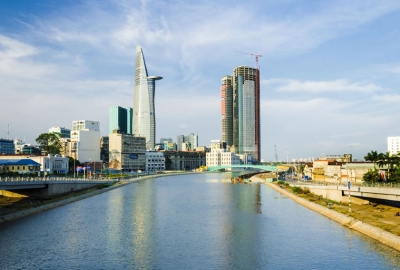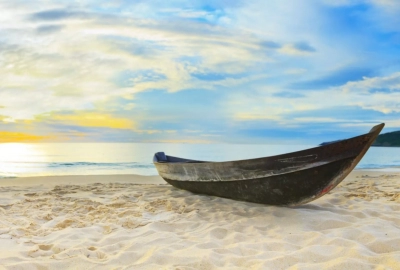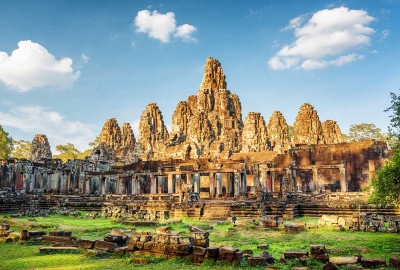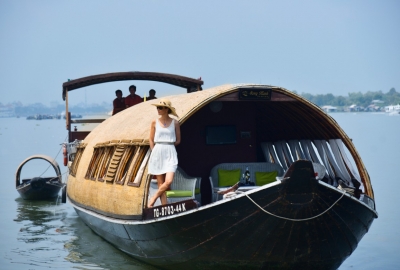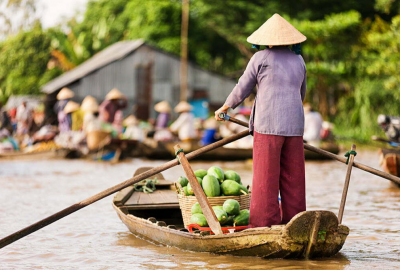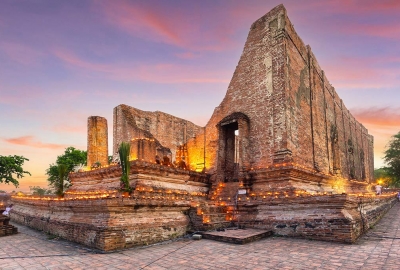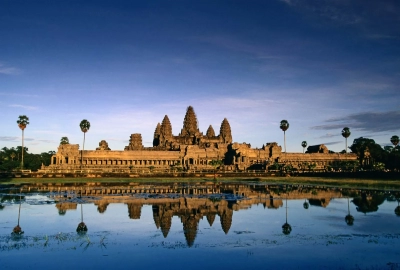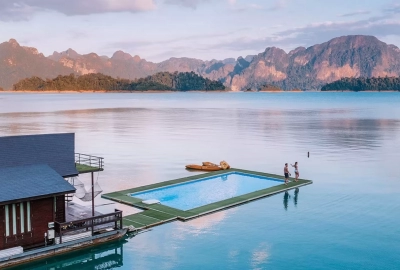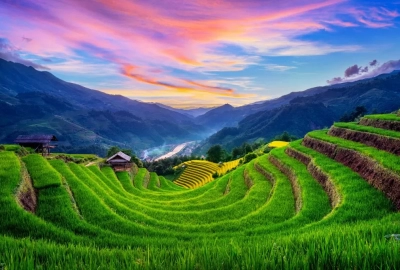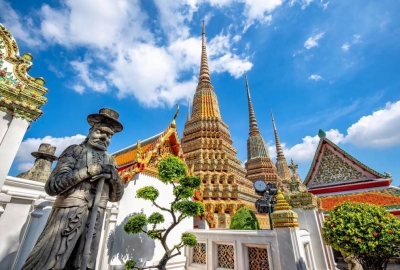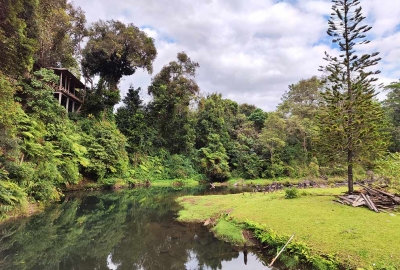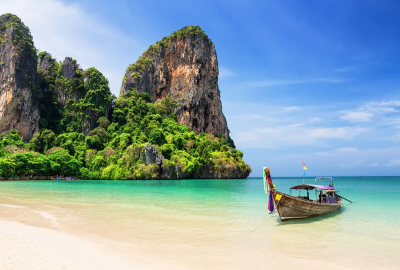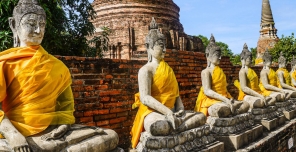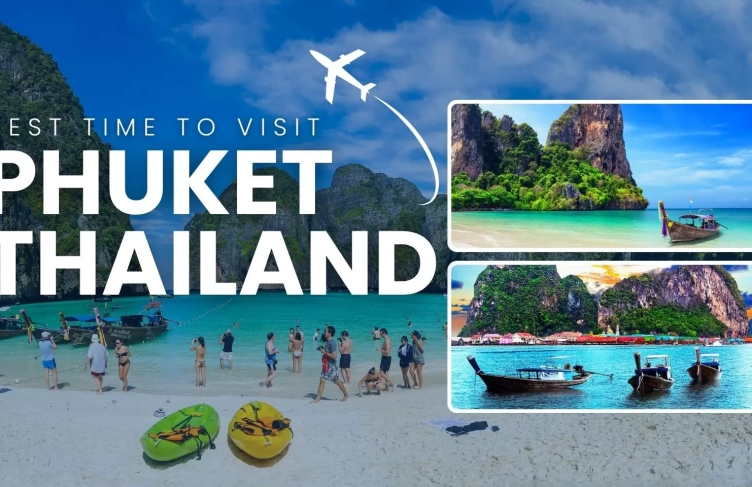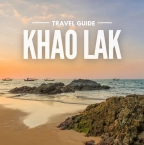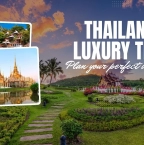Vietnamese cuisine emphasizes freshness and balance, seen in dishes like pho, banh mi, and bun cha, with street food playing a key role.
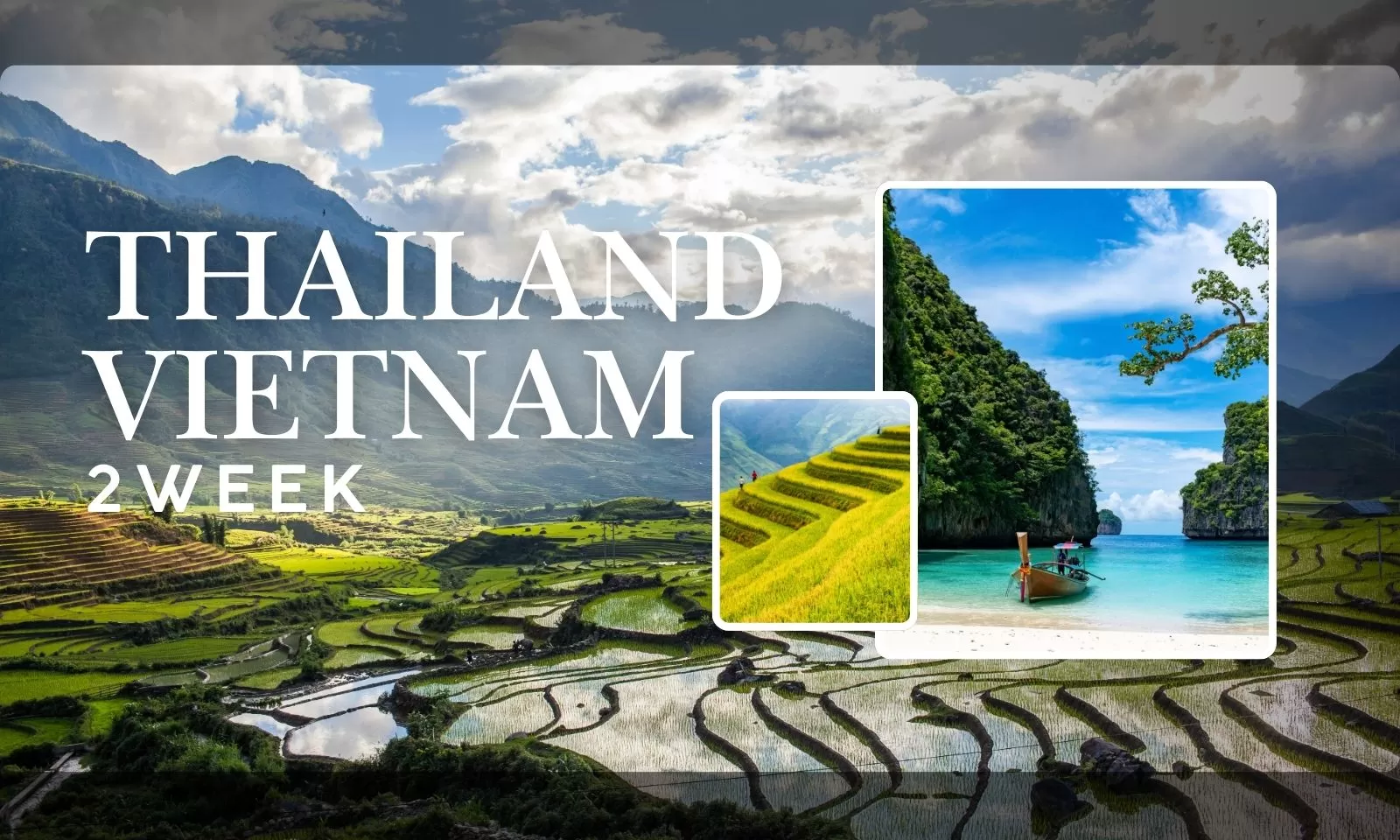
Two weeks in Thailand and Vietnam: The ultimate guide
Two weeks in Thailand and Vietnam, designed just for you! Explore a complete guide to combined circuits, unique itineraries, and tailored tips for a perfect journey, ensuring every moment of your trip is unforgettable and suited to your interests.

Thailand and Vietnam are two of Southeast Asia’s most captivating destinations, each offering a unique blend of lively culture, rich history, and attractive landscapes. With two weeks in Thailand and Vietnam, you’ll have the perfect chance to explore bustling cities, tranquil beaches, scenic mountains, and ancient temples. Let Hanoi Voyages design the perfect itinerary for you, guiding you to must-see destinations and ensuring a smooth journey full of memorable experiences.
Table of Contents
- Why choose a combined Thailand-Vietnam tour?
- The best itineraries for two weeks in Thailand and Vietnam
- Estimasted travel budget for 2 weeks Thailand Vietnam tour
- How to travel between Thailand and Vietnam?
- Best time for a combined Thailand-Vietnam trip
- Useful tips for the 2-week itinerary in Thailand and Vietnam
Why choose a combined Thailand-Vietnam tour?
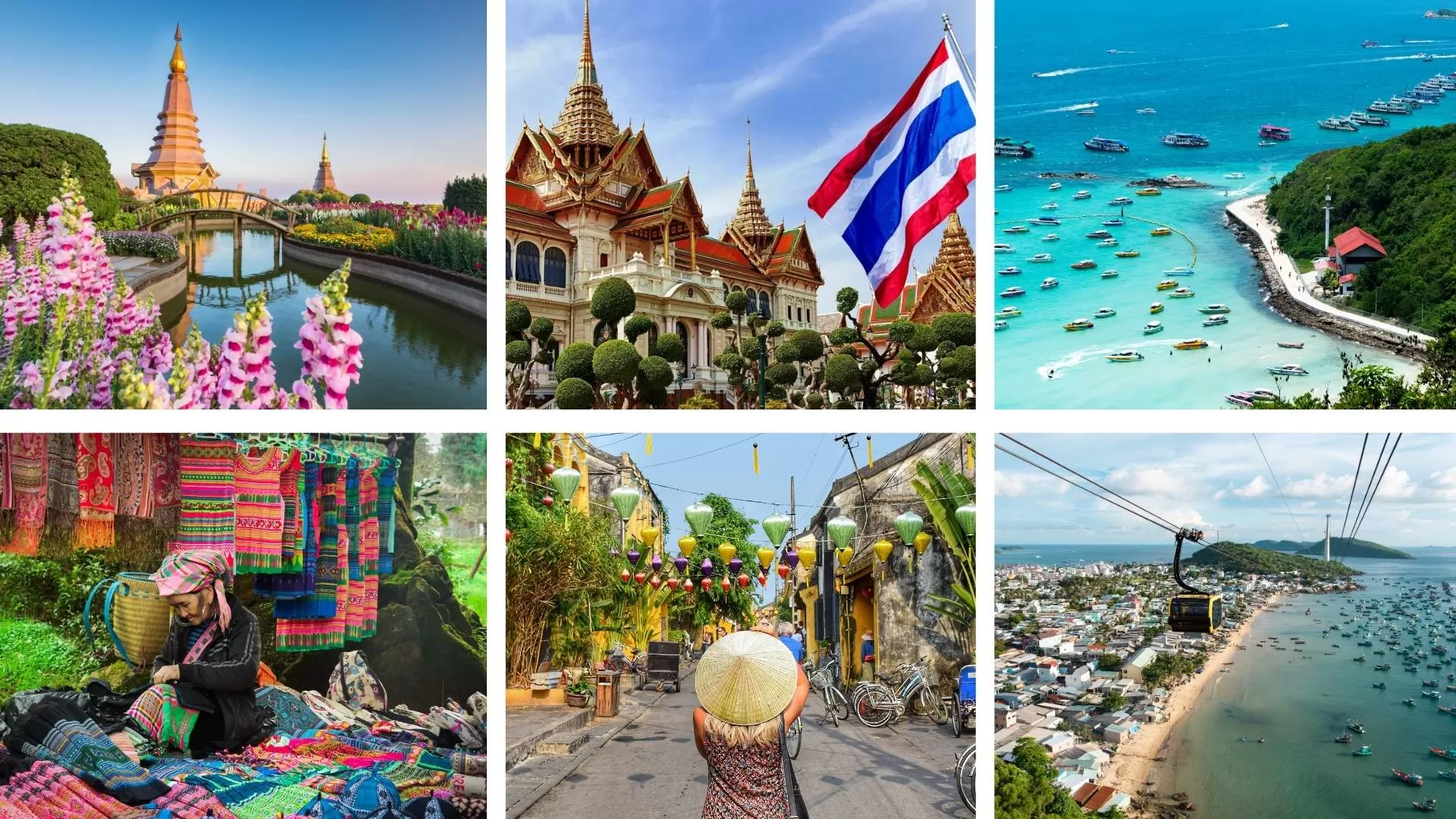
Why choose between Thailand and Vietnam when you can explore both fascinating destinations in one journey? A combined tour allows you to immerse yourself in two rich and contrasting cultures, admire landscapes that are as diverse as they are captivating, and savor the exquisite cuisine that defines Southeast Asia. This trip is the perfect blend of Vietnam's heritage and Thailand's exotic allure, where ancient traditions meet vibrant modernity, making it an ideal choice for those planning 14 days in Thailand and Vietnam.
Two unique cultures, one memorable journey
Two weeks in Thailand and Vietnam provides an opportunity to explore two neighboring yet culturally unique countries. Both Vietnam and Thailand offer enriching experiences, yet each has its own essence.
In Thailand, the country’s dynamic atmosphere can be felt in every corner. The bustling energy of Bangkok, the peaceful aura of Chiang Mai with its golden temples, and the island life of places like Phuket and Koh Phi Phi showcase the dynamic, modern side of Thailand. Traveling between these two countries takes you on a journey from deep-rooted traditions to modern vibrancy.
In Vietnam, the experience is deeply rooted in tradition. From the peaceful streets of Hanoi’s Old Quarter to the floating markets of the Mekong Delta, Vietnam’s charm lies in its slower pace of life. The ancient cities, local crafts, and connection to the land highlight a culture built over thousands of years.
Journey through the varied landscapes of Thailand and Vietnam








The Thailand and Vietnam itinerary offers a beautiful array of landscapes, each with its unique appeal.
In Thailand, the scenery shifts to jungles full of wildlife, beautiful beaches like those in Koh Phi Phi, and misty mountain views from places like Chiang Mai. Each destination provides its own unique landscape, making the trip diverse and visually spectacular.
In Vietnam, you’ll be surrounded by towering limestone formations in Ha Long Bay, serene rice fields in Sapa, and the beautiful views from the mountains of Phong Nha-Ke Bang. These landscapes offer an intimate look at nature’s grandeur.
The distinctive cuisines of Thailand and Vietnam
Food plays a central role in any journey, and a combined Thailand and Vietnam trip offers a feast of flavors. The cuisines of both countries are beloved worldwide, each offering something different to enjoy.
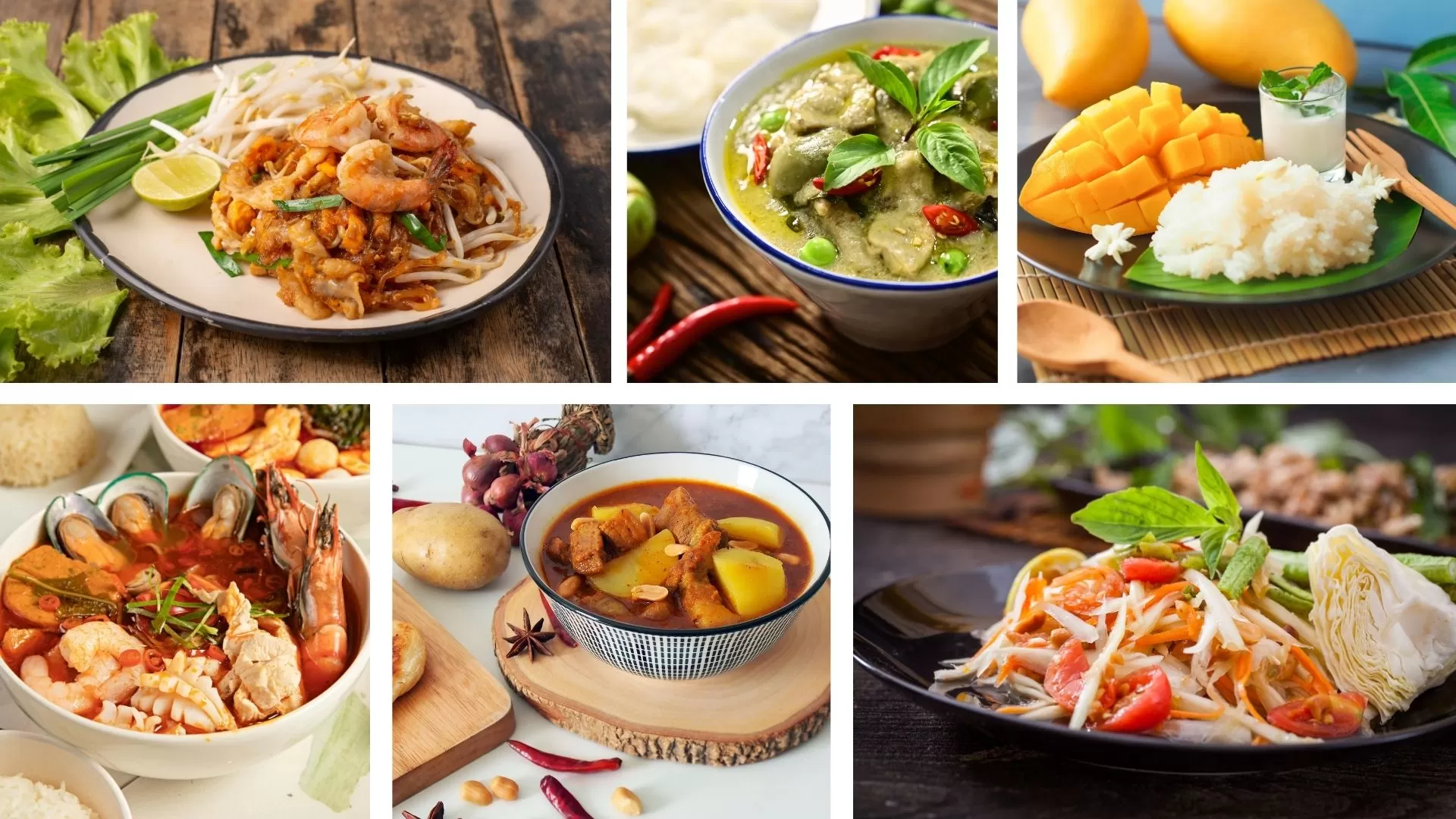 | 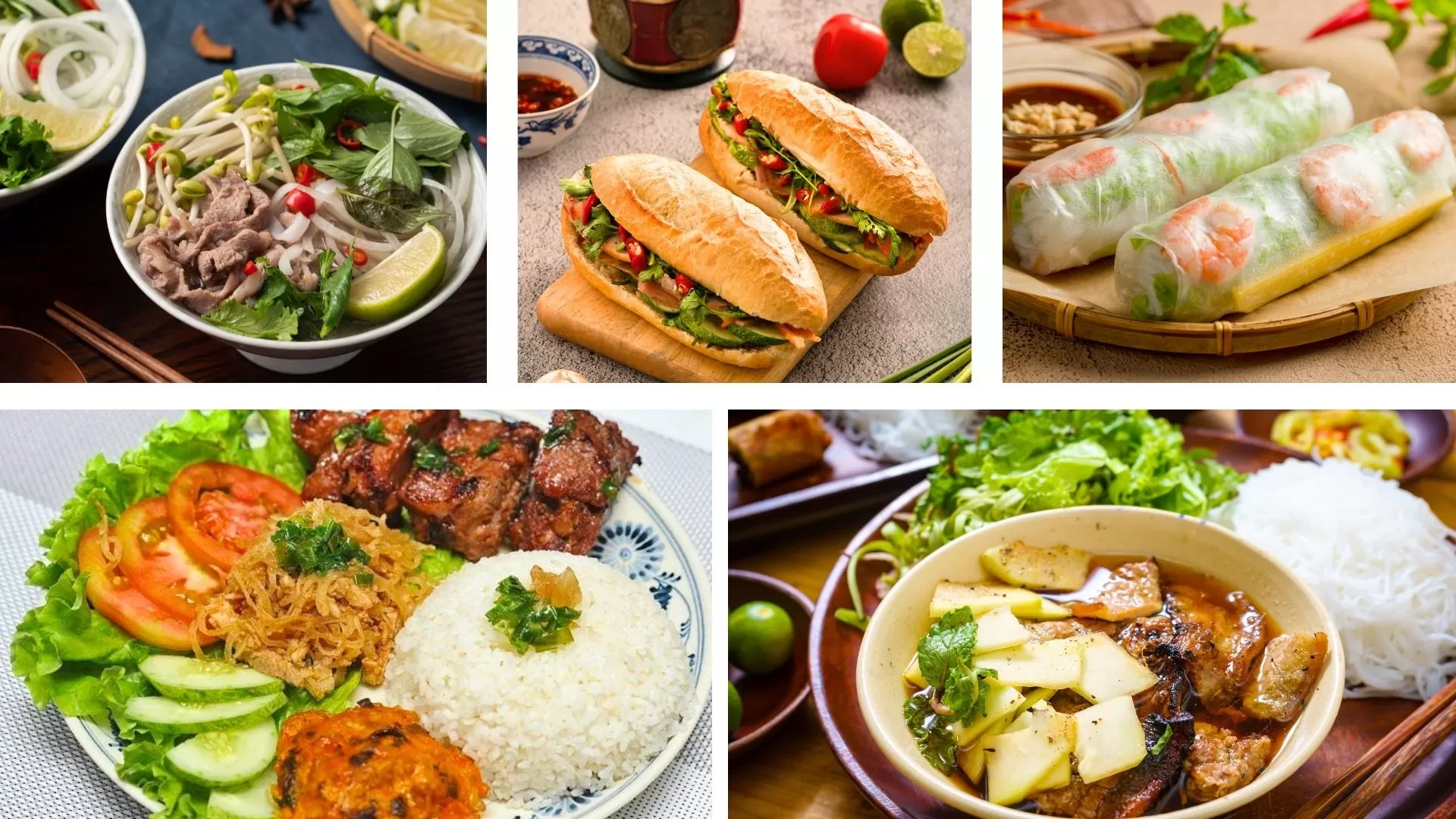 |
| Thai cuisine is bold and diverse, with spicy curries, stir-fries, and street food like pad thai, tom yum, curry soup offering rich flavors. |
The best itineraries for two weeks in Thailand and Vietnam
Thailand Vietnam 14-day itinerary offers a chance to experience the best of both countries. Within 14 days, you can explore iconic destinations, enjoy diverse landscapes, and delve into local traditions without feeling rushed. Below are the highlights of what you can experience in each country, offering a perfect blend of adventure, culture, and relaxation.
Week 1: Thailand - Land of temples and culture
The first week of your two weeks in Thailand and Vietnam itinerary focuses on Thailand’s rich cultural heritage and beautiful landscapes. In Thailand, you’ll discover iconic temples, experience local traditions, and enjoy relaxing beaches.
Visiting Bangkok’s famous landmarks
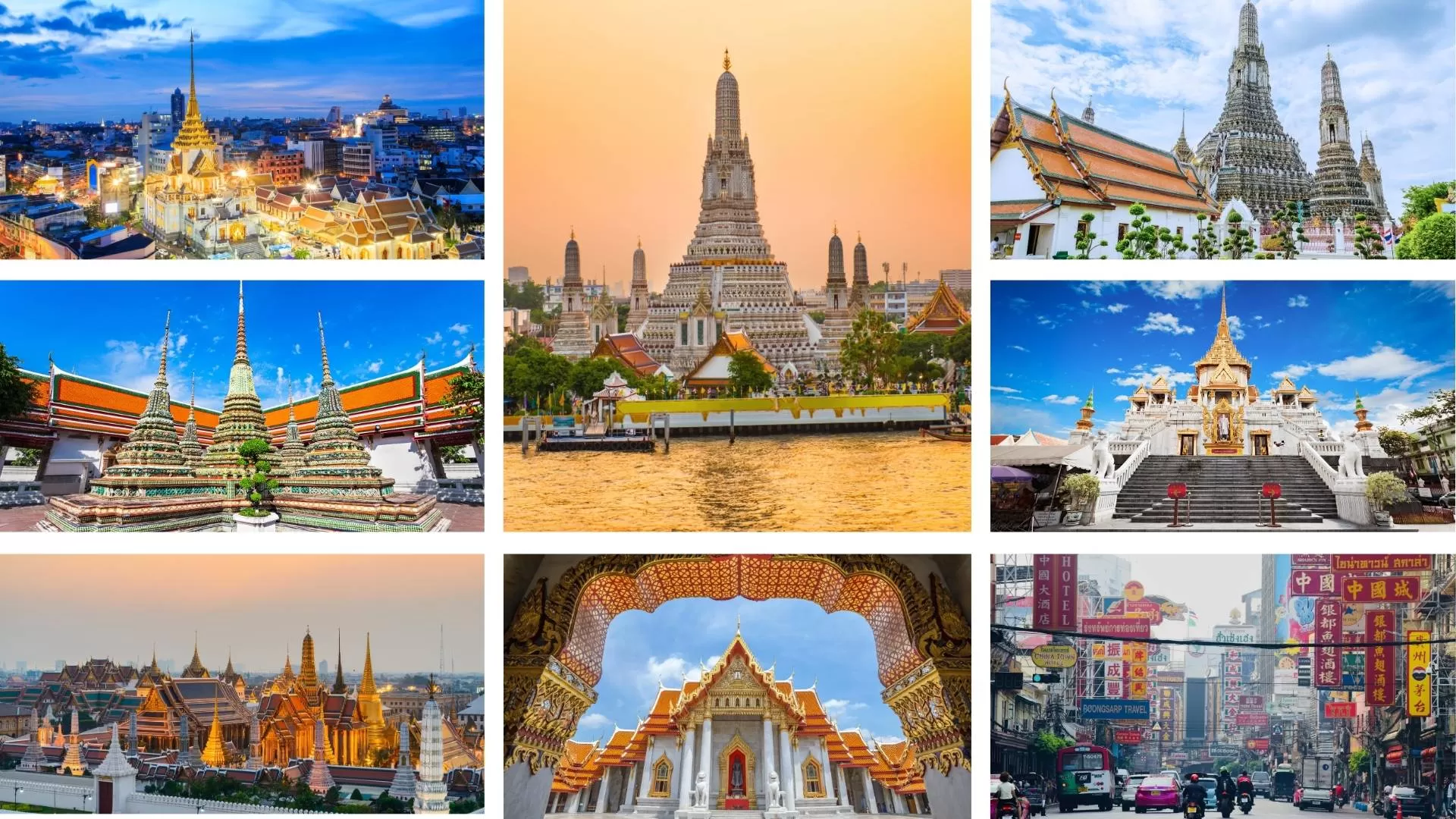
Bangkok, the vibrant capital of Thailand, is often the first stop on a journey of 2 weeks in Thailand and Vietnam. This bustling city blends rich history with modern energy, offering travelers a perfect introduction to Thailand’s culture, spirituality, and architecture.
📍 Top attractions in Bangkok: Grand Palace, Wat Pho (Reclining Buddha), Wat Arun (Temple of Dawn), Chatuchak Weekend Market, Jim Thompson House, Chinatown (Yaowarat Road),...
Exploring Ayutthaya, the former capital of Siam
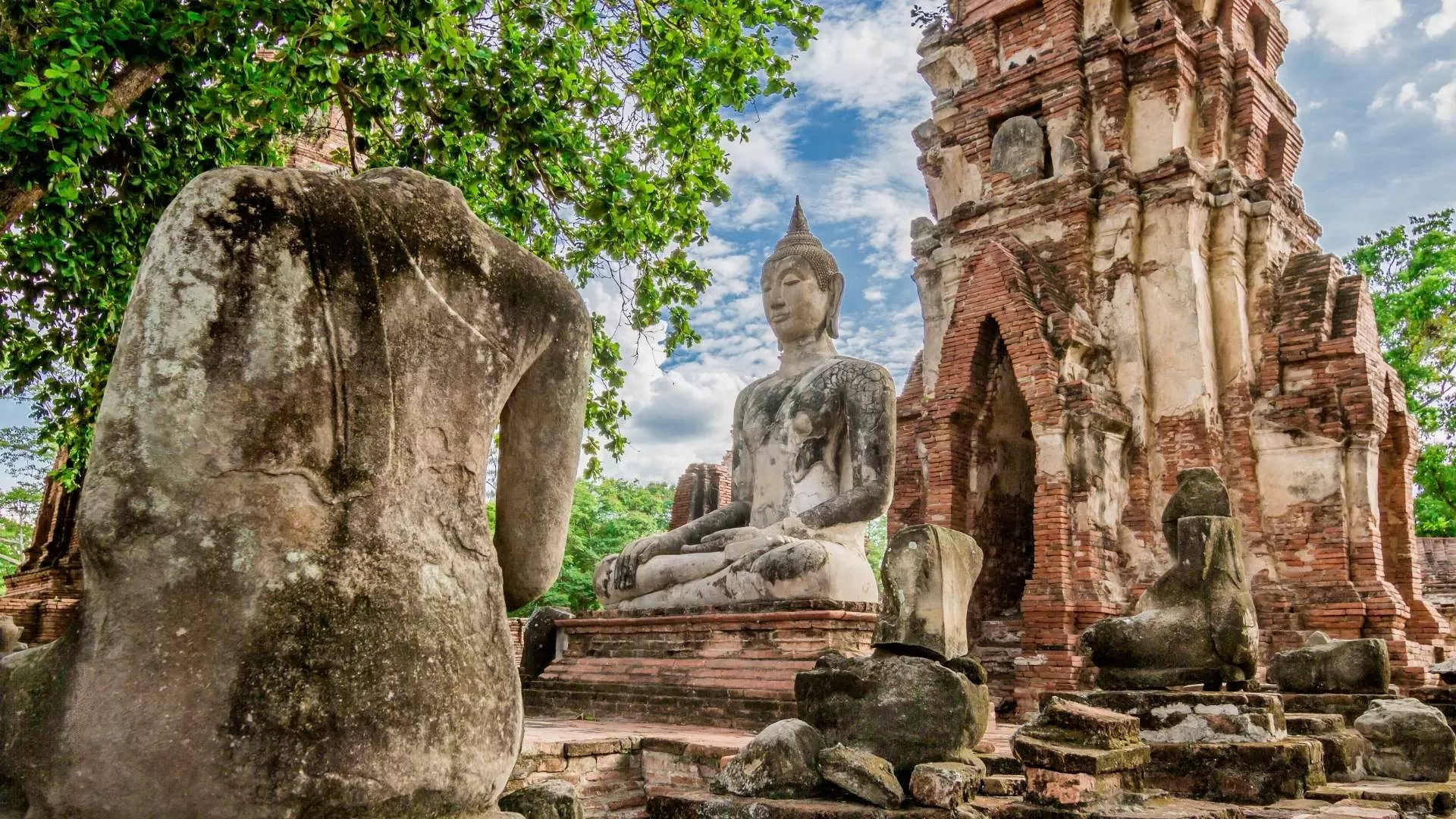 | 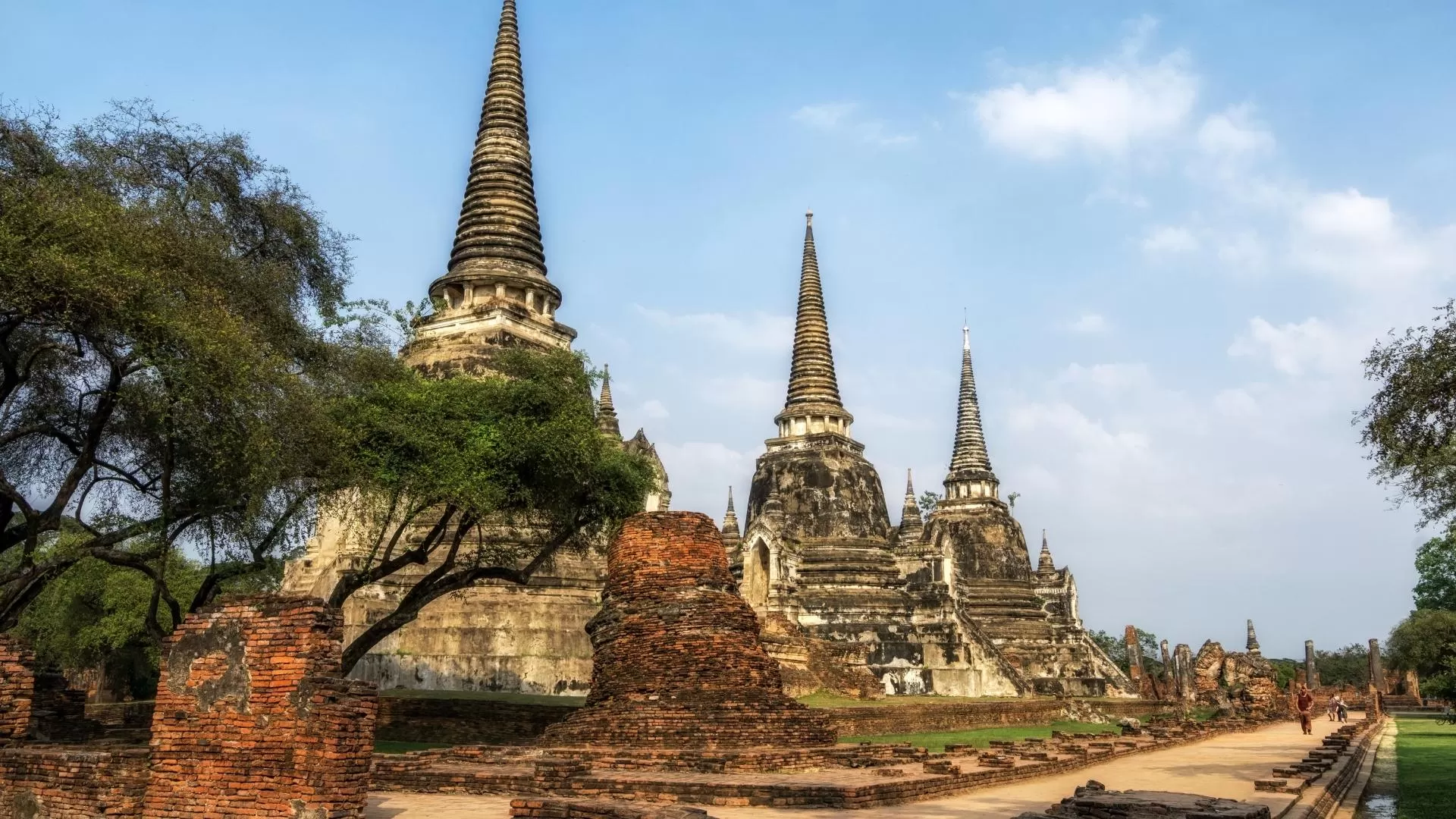 |
Just a short trip from Bangkok, Ayutthaya – a UNESCO World Heritage Site – invites you to step back in time with its majestic temple ruins and traces of the once-glorious Siamese Kingdom.
What to experience in Ayutthaya?
Discover the iconic Buddha head entwined in tree roots at Wat Mahathat
Visit the royal temple Wat Phra Si Sanphet and the riverside beauty of Wat Chaiwatthanaram
Explore the Ayutthaya Historical Park by bicycle for a leisurely pace
Take a boat tour along the Chao Phraya River to admire temples from the water
👉 Note: It’s best to visit Ayutthaya early in the morning or late in the afternoon, as the midday heat can be intense. Renting a bicycle is a great way to explore the ruins at your own pace.
Experiencing Chiang Mai’s culture and nature
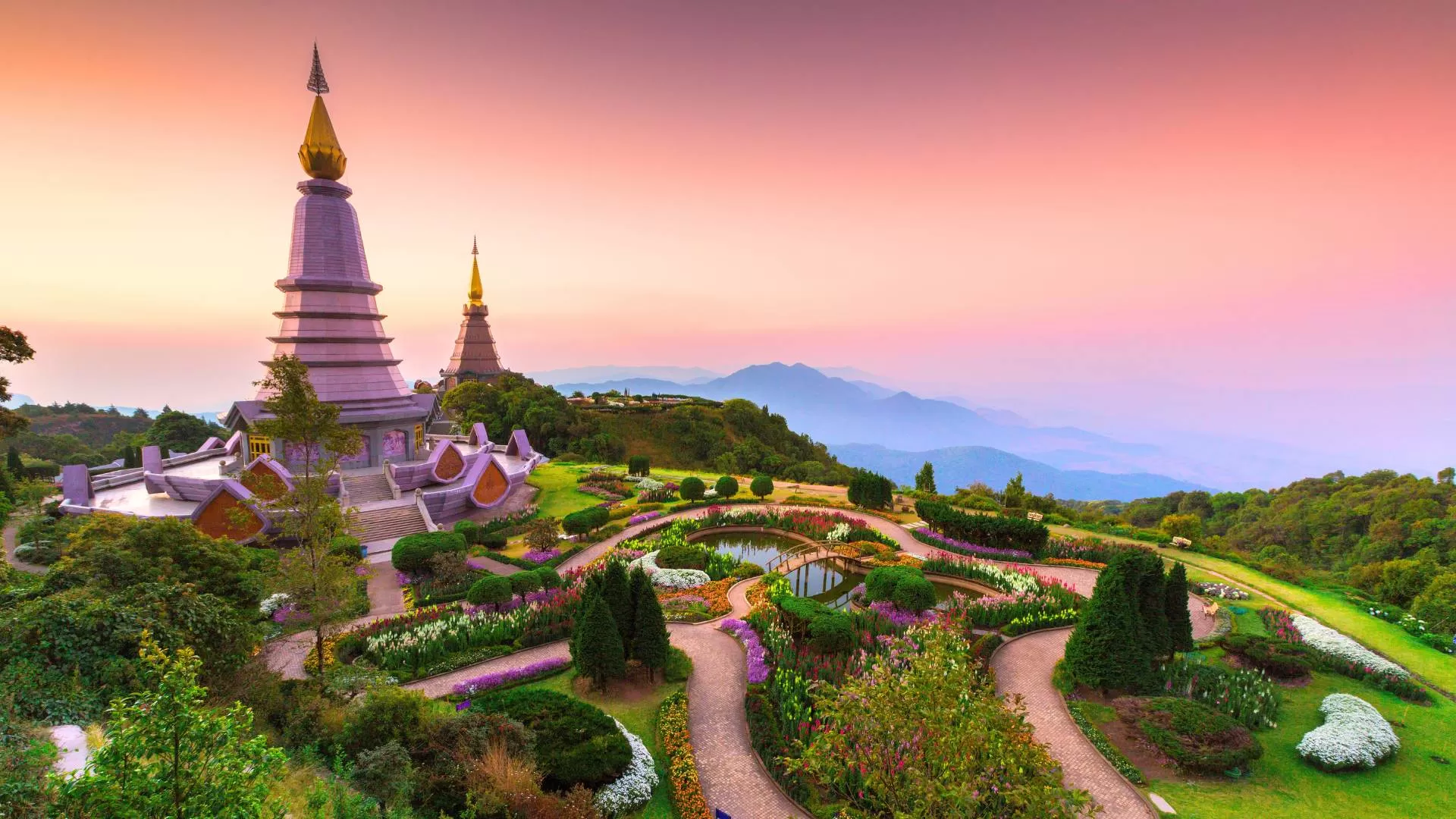
Nestled in northern Thailand, Chiang Mai is a cultural gem and a highlight in any two weeks in Thailand Vietnam itinerary, especially during the magical Yi Peng Lantern Festival, when thousands of lanterns brighten the sky.
What to experience in Chiang Mai?
Visit the sacred Wat Phra That Doi Suthep with panoramic mountain views
Go trekking in Doi Inthanon National Park, home to waterfalls, lush forests, and Thailand’s highest peak
Stroll through the Sunday Night Market and Night Bazaar for local crafts and street food
Join an ethical elephant sanctuary visit to support wildlife conservation
Immerse in traditional Lanna culture through cooking classes and handicraft villages
You can also refer: Thailand lantern festivals 2025: Yi Peng and Loy Krathong
Relaxing on the beaches of Phuket
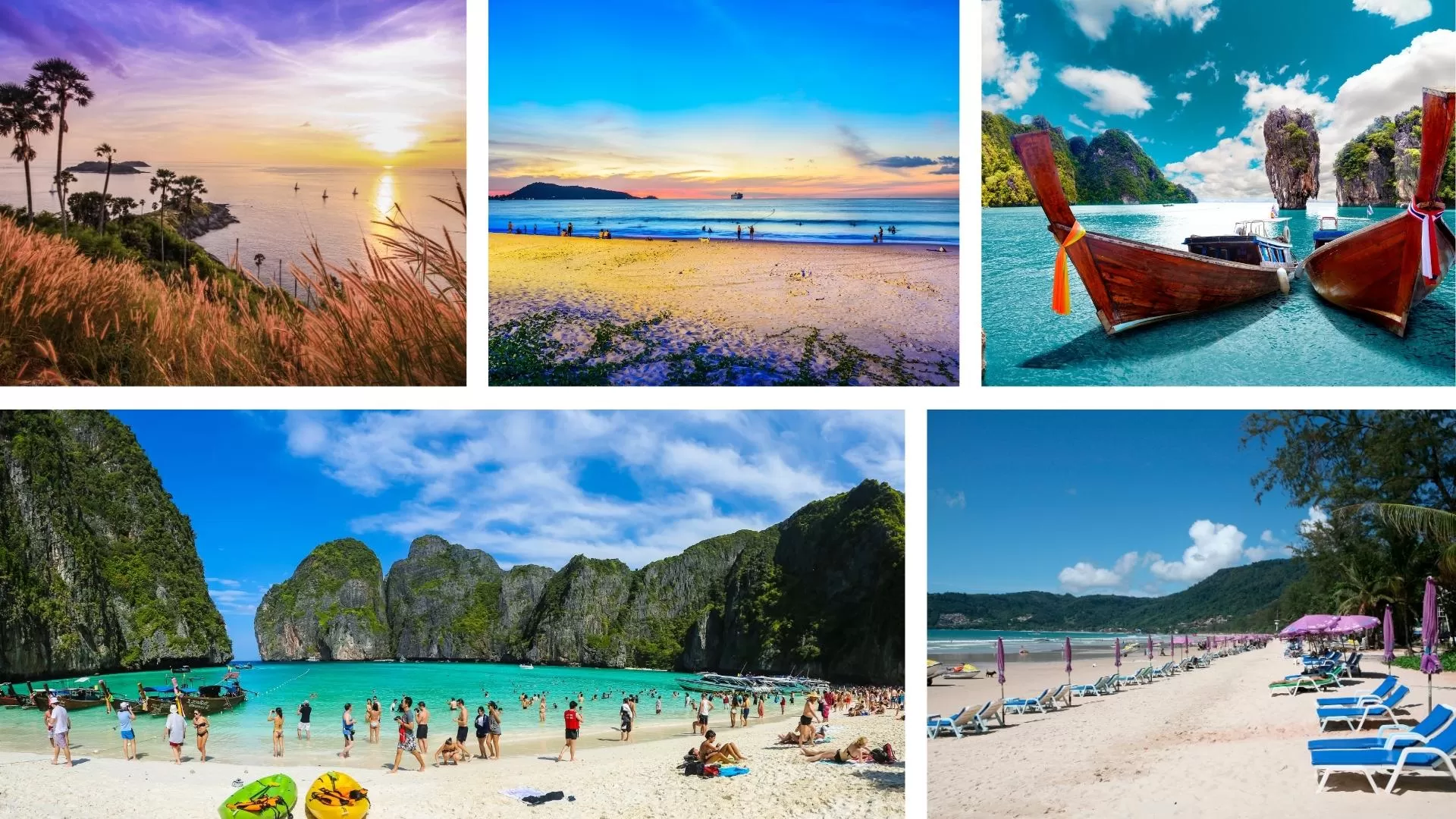
After days of cultural discovery, Phuket is the perfect retreat during your 14 days in Thailand Vietnam. Known as Thailand’s largest island, it combines relaxation, adventure, and vibrant nightlife, making it a must for any luxury Thailand Vietnam tour.
Highlights in Phuket:
Patong Beach – Famous for water sports, nightlife, and entertainment.
Kata & Karon Beaches – Ideal for a quieter, more relaxed beach escape.
Big Buddha – Iconic statue offering panoramic views of the island.
Phi Phi Islands – Crystal-clear waters, limestone cliffs, and boat tours.
Old Phuket Town – Colorful streets, heritage buildings, and local markets.
You can also read: Top 7 attractions in Phuket you can’t miss on your trip
Explore Southeast Asia with Hanoi Voyages on a 14-day journey through Vietnam and Thailand, filled with rich experiences, cultural discoveries, scenic landscapes, and lively local life. Combined with carefully curated tours in Thailand, this trip offers a diverse experience of modern cities, peaceful countryside, and tropical landscapes.
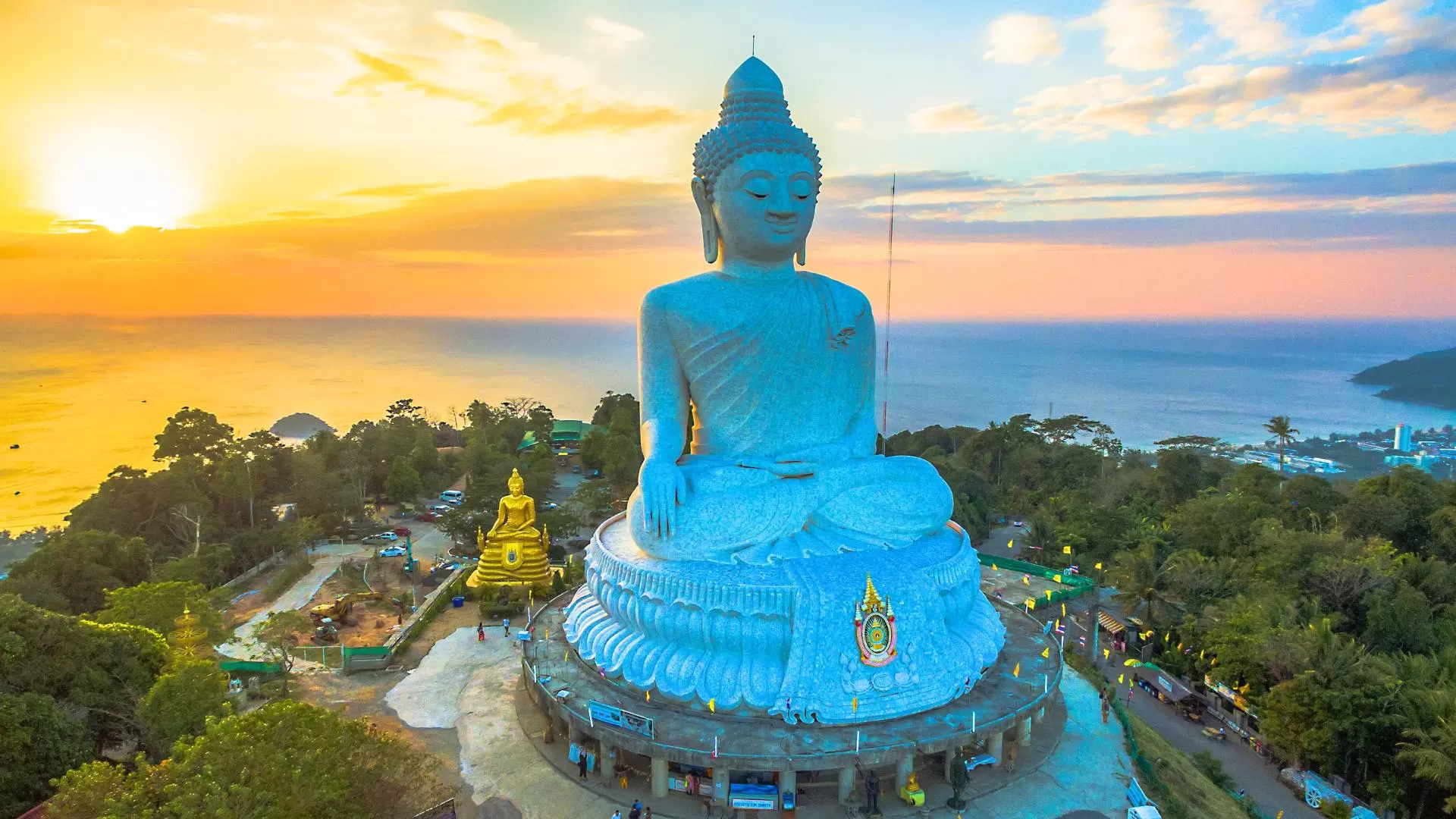 | 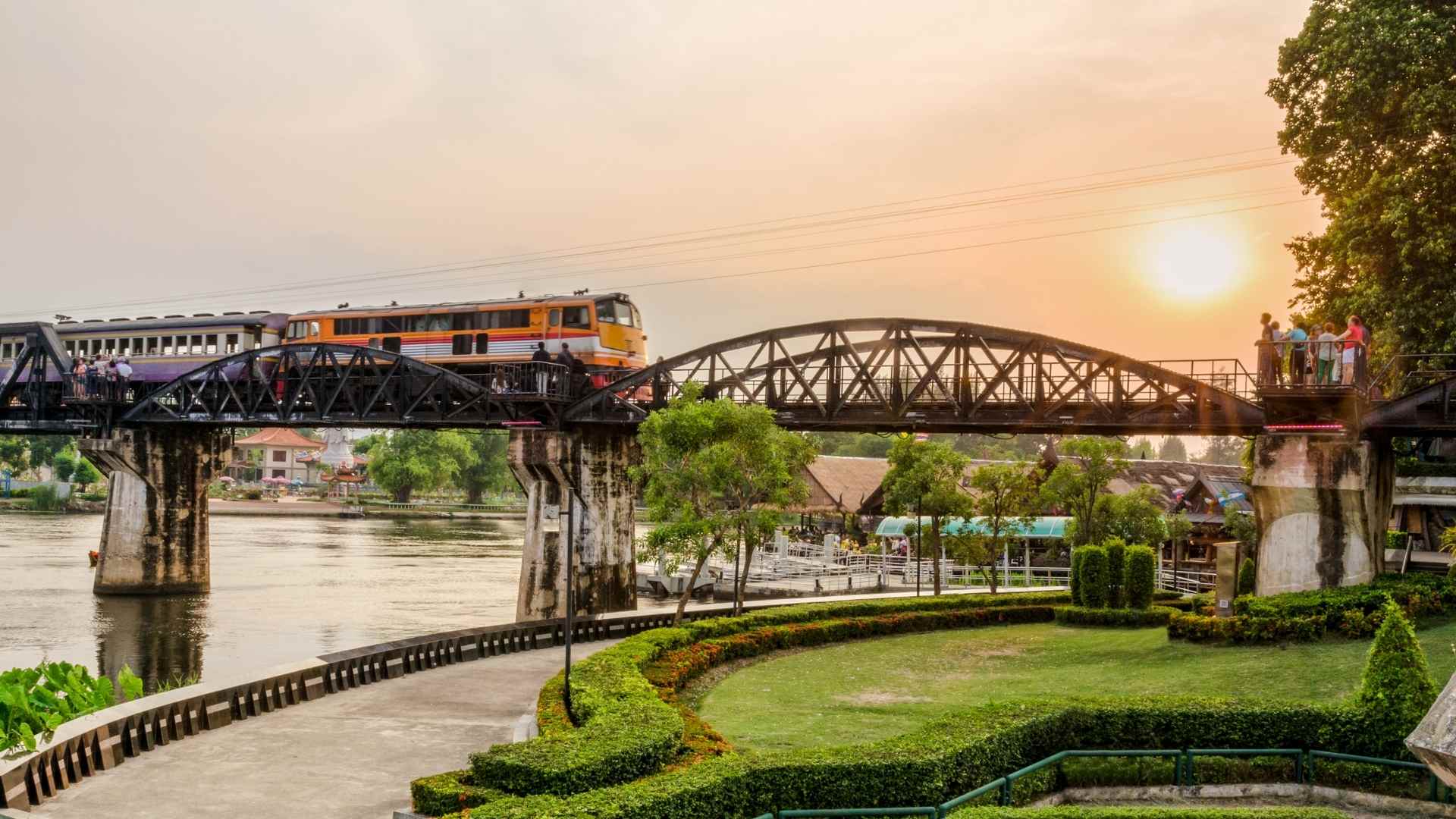 | 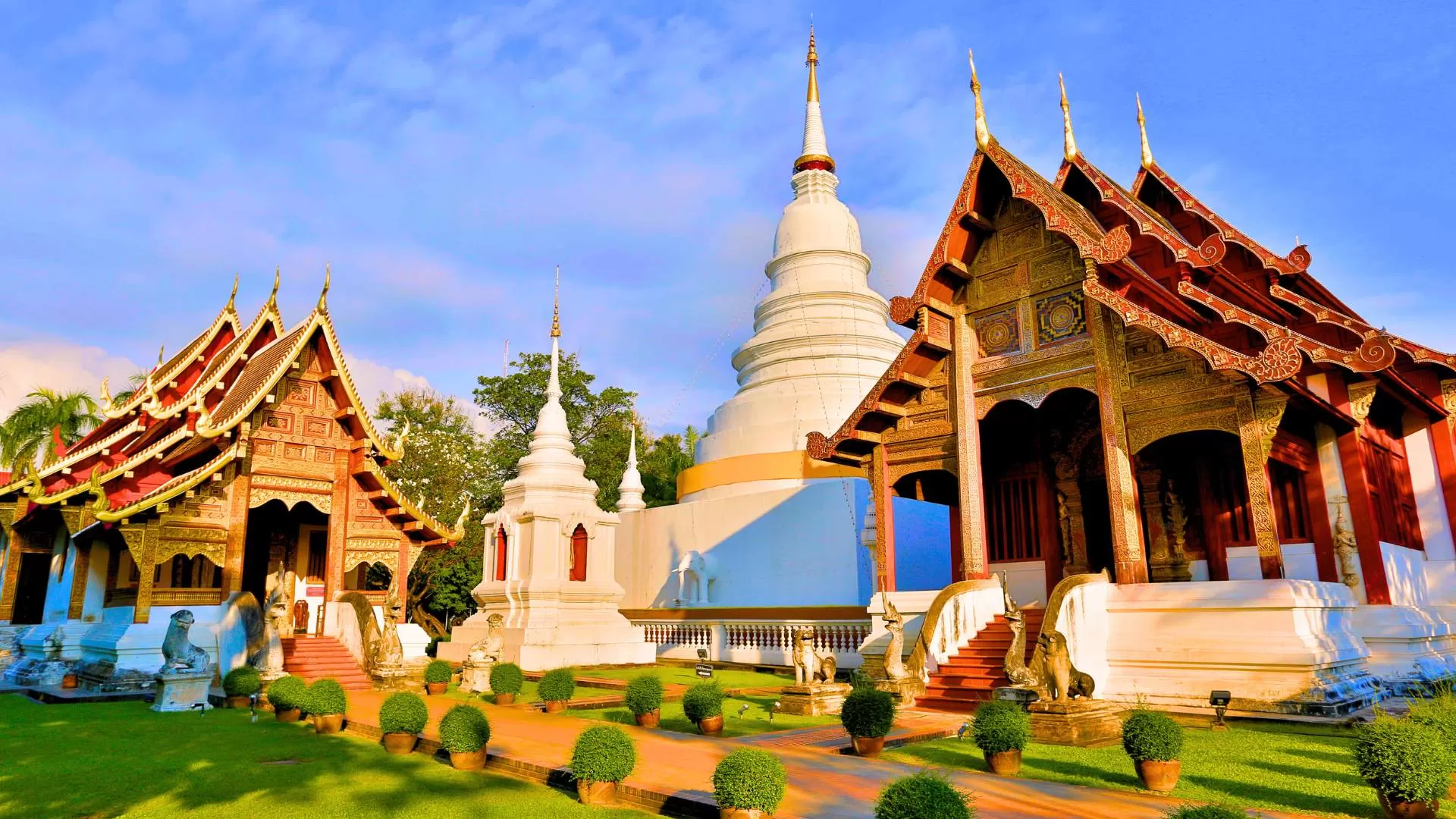 |
Thailand - Vietnam tour 14 days Exploring the stunning sights in Thailand and natural landscapes in Vietnam | Thailand Journey Full of Smiles Visit colorful markets, kayak among mangroves and relax on white sands. This trip celebrates curiosity comfort and shared discovery. | Northern Thailand tour from Ayutthaya and the magic of the North with its landscapes, ethnic groups of Chiang Mai and the Golden Triangle. |
Week 2: Vietnam - Natural wonders and historic charm
The second week of your two weeks in Thailand and Vietnam focuses on Vietnam’s captivating landscapes and deep history. From Hanoi to Ha Long Bay and Sapa, Vietnam offers a unique array of experiences that will make your journey memorable.
Discovering Hanoi, the thousand-year-old capital
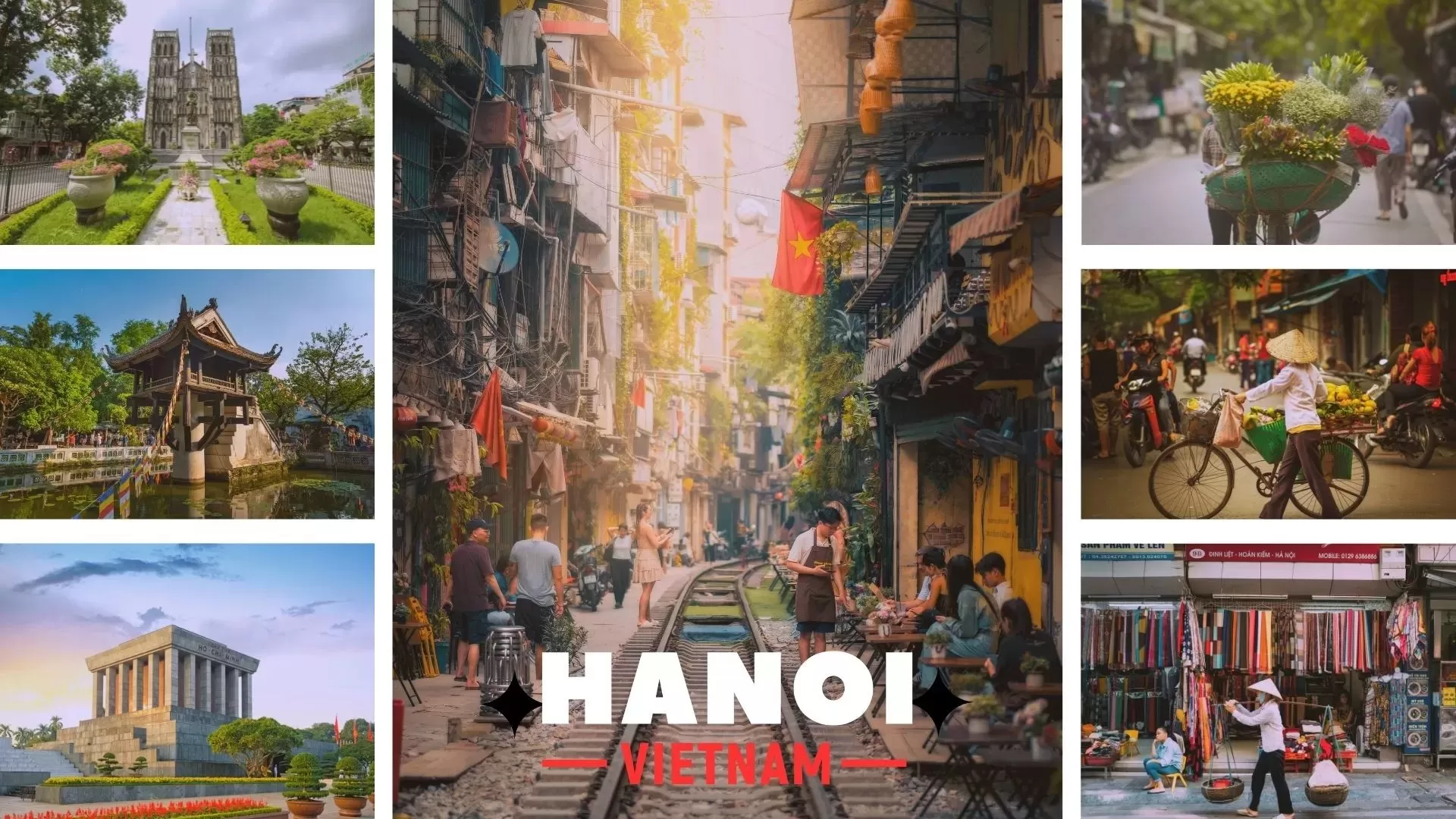
Fly into Hanoi, Vietnam’s capital, where centuries-old traditions blend seamlessly with modern life, making it an unmissable stop on your journey.
What to experience in Hanoi?
Stroll through the lively Old Quarter and taste authentic street food
Pay respects at the Ho Chi Minh Mausoleum
Explore the historic Hoa Lo Prison
Enjoy a cyclo ride around the charming Hoan Kiem Lake
End your day with a traditional water puppet show rooted in Vietnamese culture
You can also refer: Water puppet show in Vietnam: A unique cultural experience
Cruising through Ha Long Bay

A highlight of any two weeks in Thailand and Vietnam journey, Ha Long Bay captivates with emerald waters and limestone karsts that rise majestically from the sea.
What to experience in Ha Long Bay?
Take a cruise for an overnight stay or a scenic day trip
Go kayaking through hidden caves and tranquil lagoons
Discover the vast Sung Sot Cave, one of the bay’s most stunning grottoes
Visit floating fishing villages to glimpse traditional coastal life
Relax on deck while admiring the sunset over the bay
👉 Looking for a more private and comfortable experience? Discover our exclusive options for cruise in Ha Long or CONTACT US to begin your unforgettable luxury trip in Thailand Vietnam: Ha Long Bay Cruise
Trekking in Sapa and meeting local ethnic groups
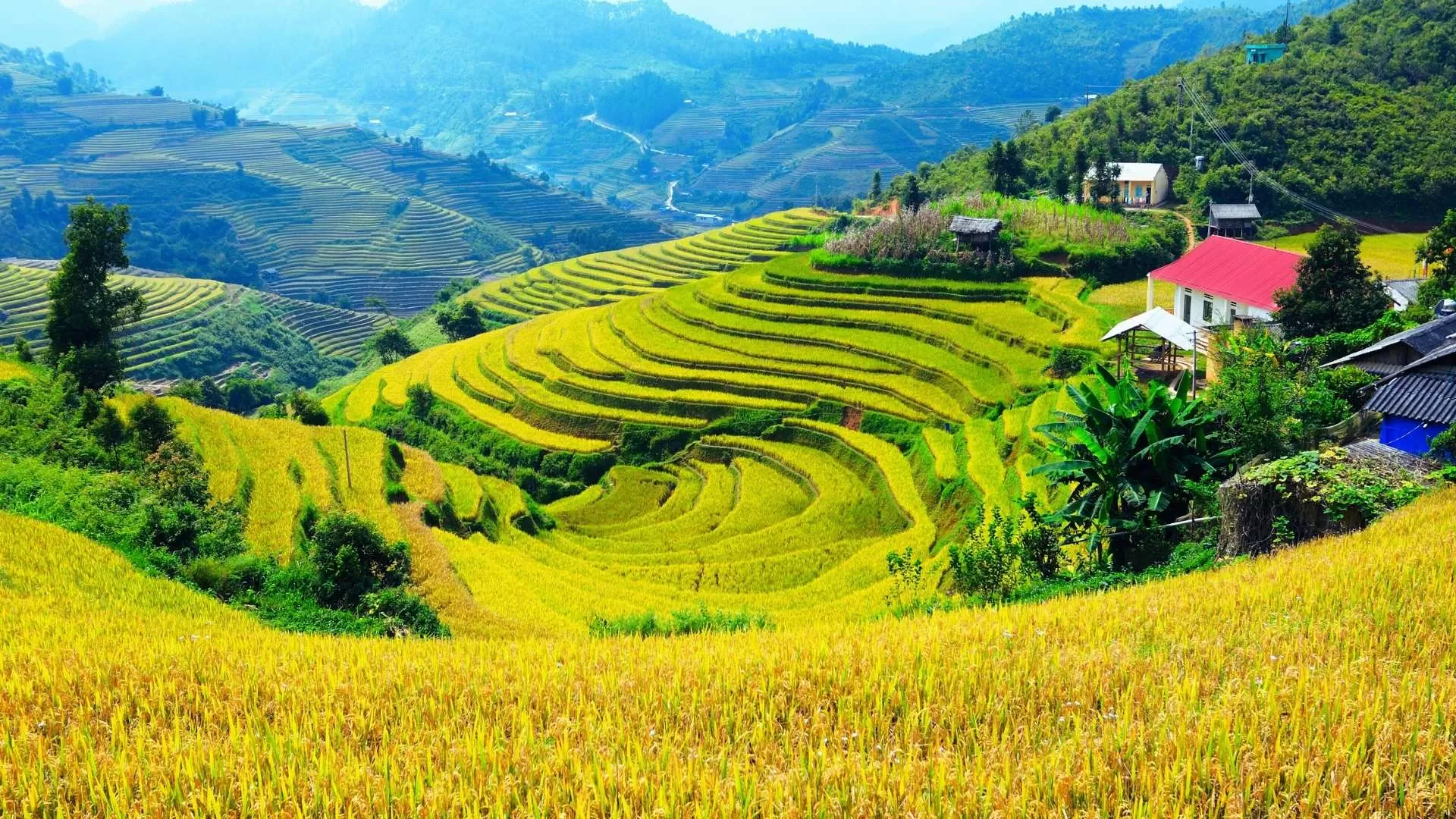
Sapa, located in northern Vietnam, is known for its terraced rice fields, high mountains and ethnic minority communities. Trekking is the best way to explore the area, with trails passing through villages such as Ta Van, Lao Chai and Cat Cat. These villages are home to the H’Mong, Dao and Tay people, who still maintain their traditional way of life.
Along the way, take the chance to interact with local families, learn about their way of life, and enjoy home-cooked meals. This part of your Thailand and Vietnam itinerary offers not just scenic beauty but also a deeper connection to rural Vietnam’s communities.
Exploring the vibrancy of Bac Ha market
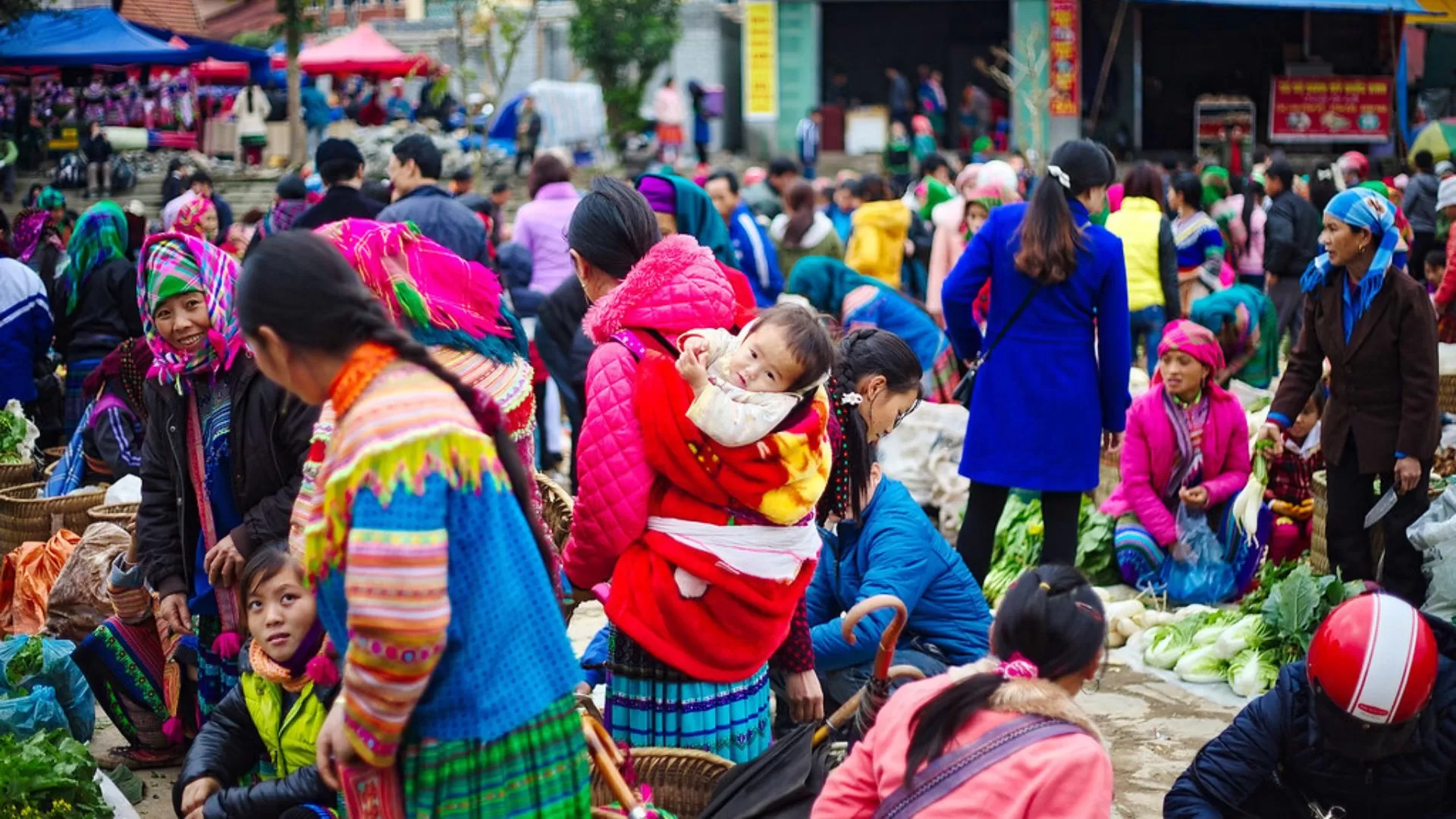
Tucked away in the northern mountains, Bac Ha Market is a vibrant cultural hub and a unique highlight of any Thailand Vietnam 14-day itinerary.
What to experience in Bac Ha Market?
See ethnic minority groups in colorful, handmade traditional clothing
Browse stalls selling fresh produce, spices, textiles, and even livestock
Taste local specialties like thắng cố (horse meat stew)
Try a glass of freshly brewed corn wine with the locals
Immerse yourself in the lively atmosphere of trading, music, and cultural exchange
Embark on a 14-day journey through Vietnam and Thailand with Hanoi Voyages, where each destination offers its own unique charm. In addition, extended tours in Vietnam will take you to iconic places like Halong Bay and the heritage-rich central region, offering a deeper insight into the S-shaped country.
|
|
|
Thailand and Vietnam tour 14 days Unforgettable travel to explore both countries, featuring Bangkok, Phuket, Hanoi, Sapa, and more. | Discover UNESCO sites and the stunning Pu Luong Reserve. Enjoy a diverse adventure that's perfect for all ages. | Vietnam tour 15 days with Pu Luong Start your tour with the highlight of Pu Luong Nature Reserve. Explore lush landscapes, rich culture and unforgettable experiences. |
Estimasted travel budget for 2 weeks Thailand Vietnam tour

This section provides an estimated Thailand Vietnam tour 14 days budget to help you plan ahead for transportation, accommodation, meals and activities – ensuring a smooth and worry-free experience across both countries.
On average, for a 2 weeks Thailand Vietnam tour, travelers should prepare between $2,500 and $3,500:
Budget travelers: Expect to spend around $2,500 – $2,700, staying in budget hotels or guesthouses, using public transport and enjoying delicious local street food.
Mid-range travelers: Plan for $2,800 – $3,000, which covers boutique hotels, a combination of local and international dining and a few guided tours and activities.
Luxury travelers: Costs may reach $4,000 or more, including high-end resorts, private transfers, personalized excursions and fine dining experiences.
For more details: Thailand Vietnam travel budget: What to expect
How to travel between Thailand and Vietnam?
When planning a Thailand Vietnam tour or designing your own 14 days in Thailand Vietnam itinerary, you’ll find multiple ways to travel between the two countries. Here are the most common options:
By air – Fastest and most convenient
Thailand’s three main international airports (Bangkok, Phuket, Chiang Mai) connect easily with Vietnam.
Popular routes: Ho Chi Minh City – Bangkok (around 90 minutes), Hanoi – Bangkok, Da Nang – Bangkok, or Phu Quoc – Bangkok.
Ideal for travelers who want to maximize their time during two weeks in Thailand Vietnam.
Overland – For the adventurous
Via Cambodia: Bus from Vietnam to Phnom Penh or Siem Reap, then continue by bus/train to the Thai border at Aranyaprathet.
Via Laos: Bus from Hanoi to Vientiane, then onward to Thanaleng, where a train connects to Nong Khai in Thailand.
Tickets for trains are easy to secure, while buses may require booking through local agencies.
Whether you prefer the comfort of flying or the adventure of crossing borders by land, both options can fit perfectly into your Thailand Vietnam tour.
Best time for a combined Thailand-Vietnam trip
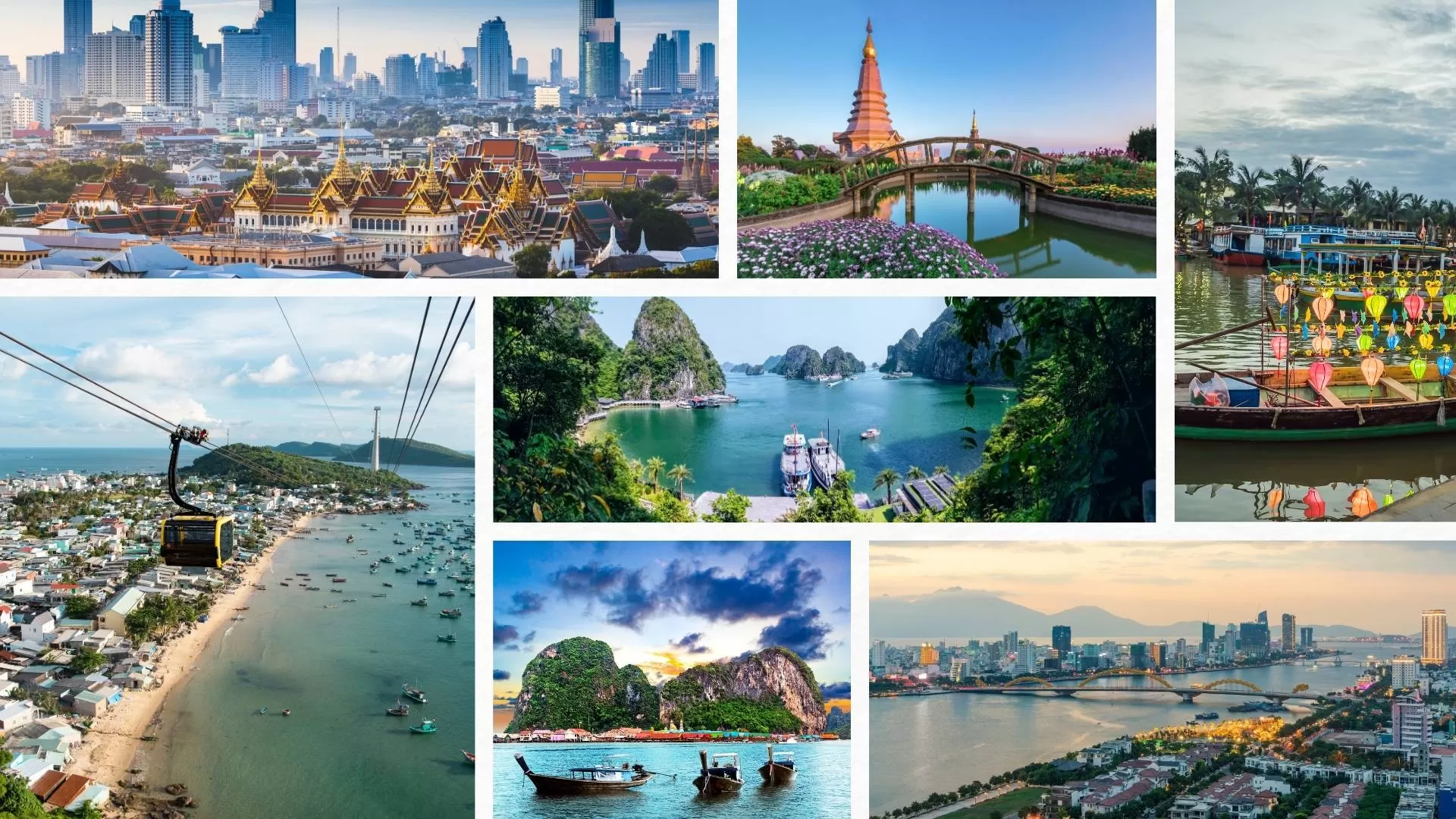
The ideal period for a combined Thailand Vietnam tour is between November and April. During this time, the weather is most favorable, with mild temperatures and clear skies - perfect for sightseeing, temple visits, and enjoying the landscapes without heavy rainfall.
In Vietnam, the north (Hanoi, Ha Long Bay, Sapa) has cool and dry weather, making it an excellent time for cultural activities and hiking. The central region (Hoi An, Hue, Da Nang) experiences pleasant weather after the rainy season, while the south (Ho Chi Minh City, Mekong Delta, Phu Quoc) enjoys sunny days with ideal temperatures for beach activities.
In Thailand, both Bangkok and Chiang Mai experience dry and comfortable conditions, perfect for exploring temples and markets. The southern islands, such as Phuket, Koh Samui, and Koh Lanta, have beautiful, sunny weather, ideal for relaxing on the beach.
For those considering travel between May and October, be aware that this is the rainy season. However, rain showers tend to be short and this time of year offers fewer tourists, lush scenery, and more affordable travel options.
For more information: Best time to go to Vietnam and Thailand
Useful tips for the 2-week itinerary in Thailand and Vietnam
Traveling across two countries in two weeks in Thailand and Vietnam requires some preparation. Here are a few practical tips to ensure a smooth and enjoyable trip.
Visa requirements
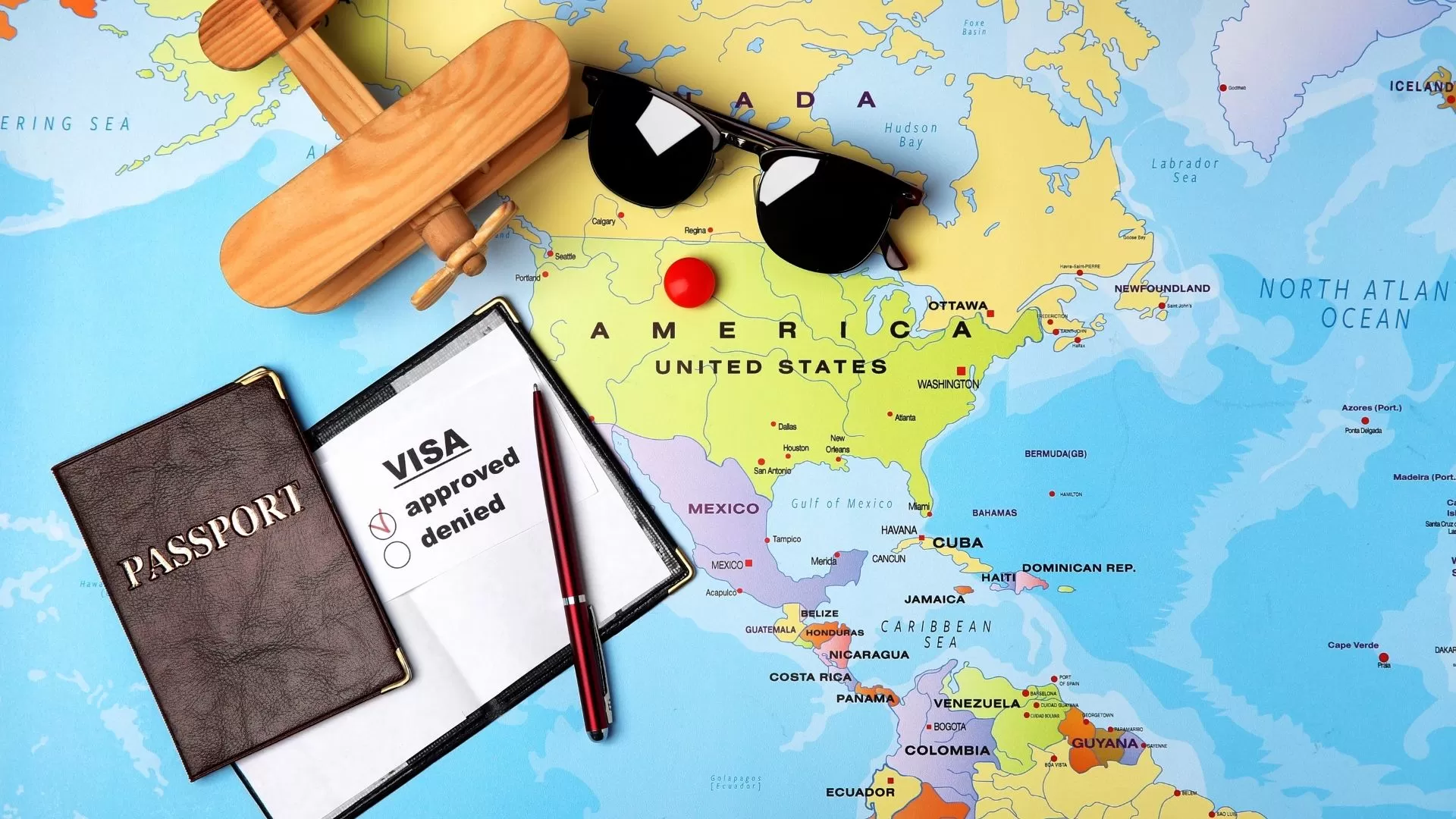
Thailand: Many nationalities can also enter visa-free under the visa exemption rule, which typically allows for a stay of up to 60 days and can be extended for 30 more days. This applies to visitors from 93 countries, including the United States, Canada, the UK, Australia, and most European countries. Travelers from other countries and territories can apply for a Visa on Arrival. LEARN MORE
Vietnam: Many nationalities can enter Vietnam visa-free for up to 45 days, including Japan, South Korea, the United Kingdom, France, Sweden, Germany, etc. For longer stays, travelers can apply for a tourist visa, which is available as a single or multiple-entry visa valid for 30 to 90 days. The eVisa option is available for citizens of 80 countries and allows stays of up to 30 days. Travelers can also opt for a visa on arrival for air travel, but they must secure an approval letter in advance. LEARN MORE
📌 Always double-check the latest regulations and make sure you have the proper visa before you leave to avoid delays or issues at immigration.
SIM card and Internet access
Staying connected is essential during your travels. Both countries offer easy access to local SIM cards with affordable data plans.
Thailand: Local SIM cards from providers like AIS, TrueMove, and DTAC are available at airports and stores.
Vietnam: Similarly, local SIM cards in Vietnam are available at airports, convenience stores, and mobile carrier shops. Viettel, Mobifone, and Vinaphone are the main providers, with affordable options for tourists.
Currency exchange and withdrawals
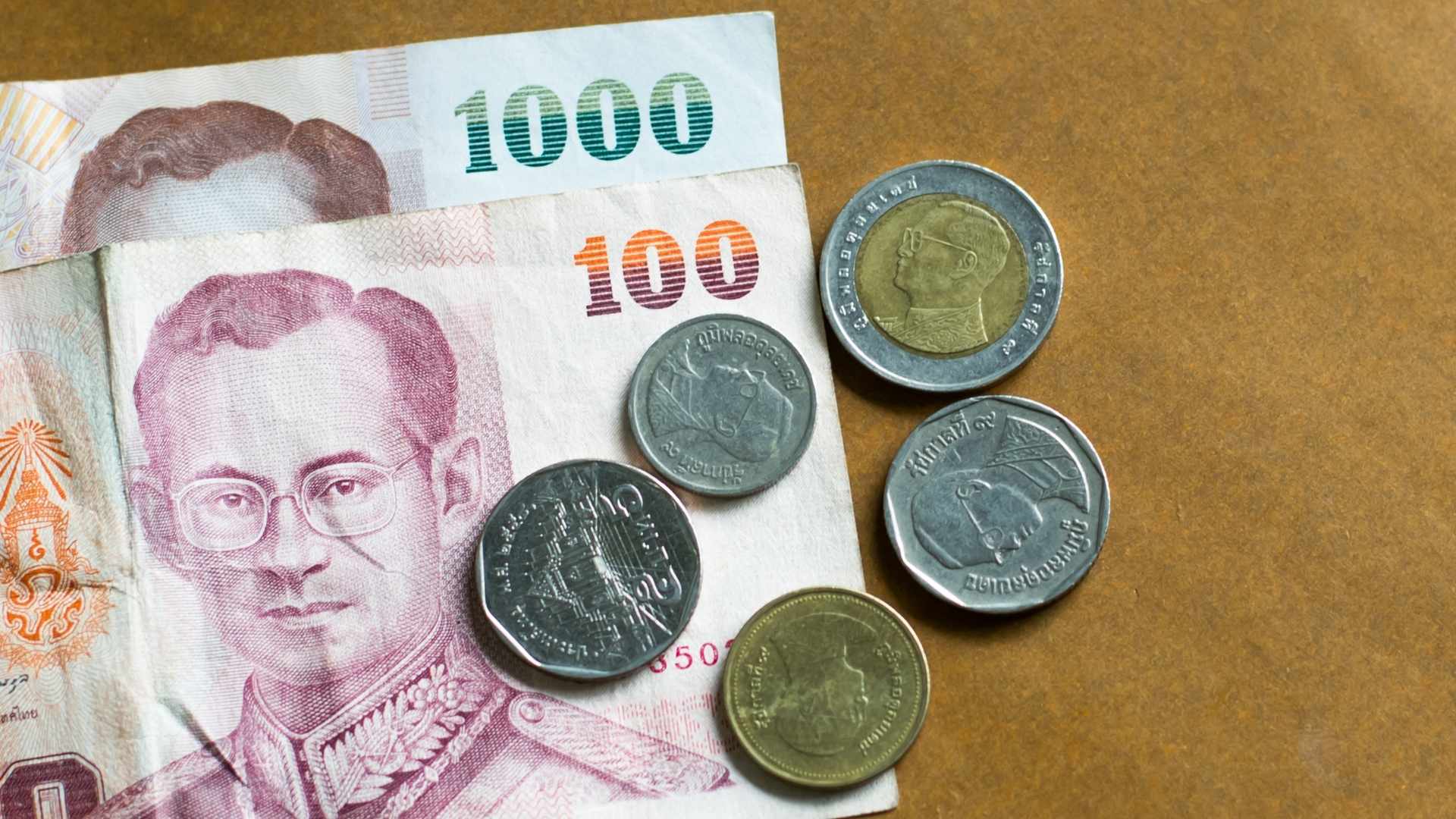 | 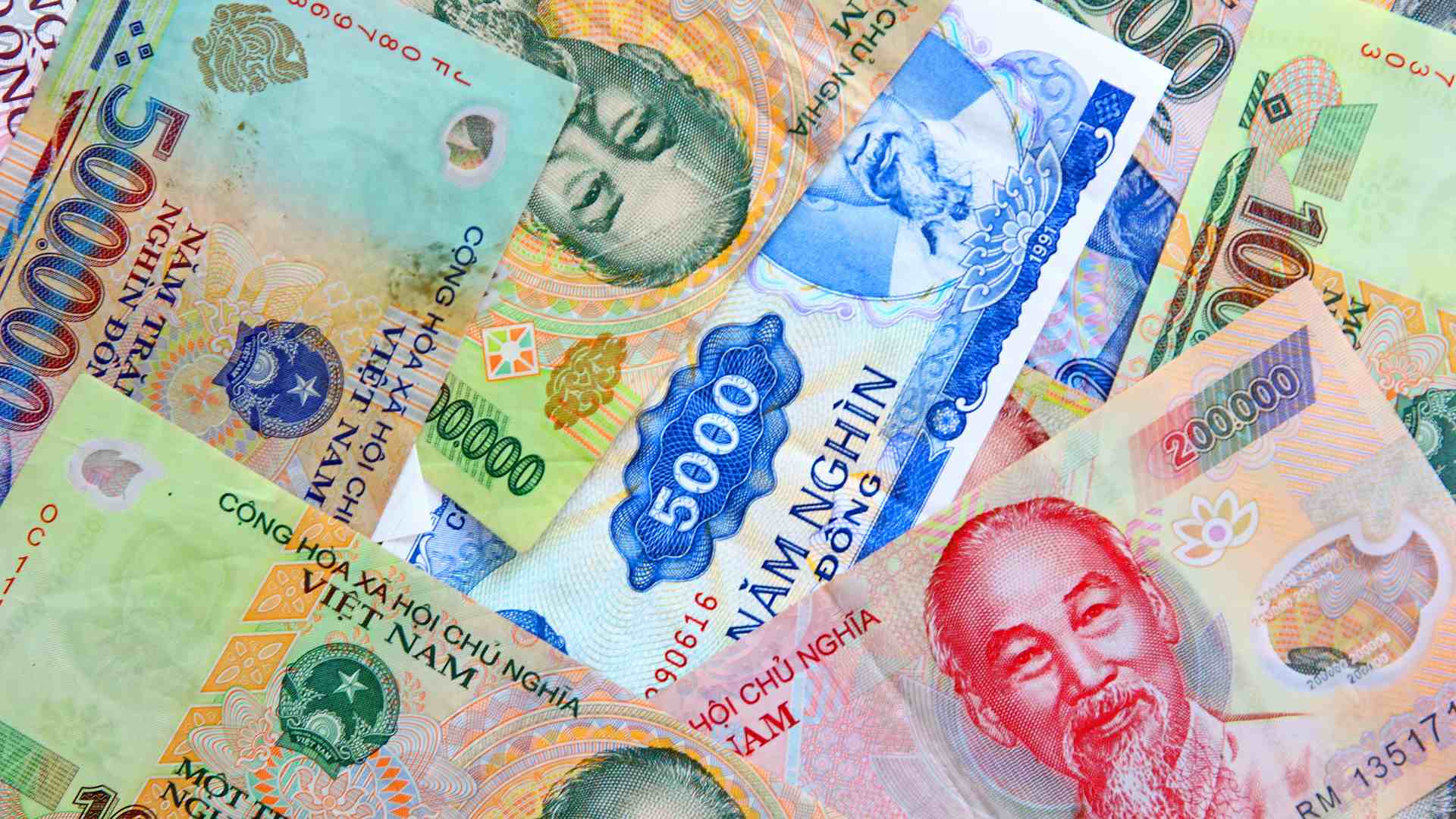 |
Thailand and Vietnam each have their own currency, and it’s essential to understand how to manage your finances while traveling between the two countries.
Thailand: The currency used is the Thai Baht (THB). You can exchange your money at banks, exchange offices, or withdraw cash from ATMs in major cities and tourist areas. Credit cards are widely accepted in cities but should carry some cash for smaller transactions or in rural areas.
Vietnam: The Vietnamese Dong (VND) is the official currency. You can exchange money at currency exchange counters or withdraw cash from ATMs throughout the country. While credit cards are accepted at hotels, restaurants, and larger shops in major cities, you may find cash is required for purchases in smaller towns or rural areas.
Other practical tips
Pack lightweight clothing, but bring layers if visiting cooler regions like Sapa. Don’t forget sunscreen and comfortable walking shoes.
Use ride-hailing apps like Grab for easy city travel. For longer distances, flights are often more convenient.
Respect local traditions, especially when visiting temples and rural areas.
While English is commonly spoken in tourist areas, learning a few local phrases in Vietnamese and Thai can be helpful.
Spending two weeks in Thailand and Vietnam offers a remarkable opportunity to experience the diverse cultures, landscapes, and histories of these two beautiful countries. From the bustling streets of Bangkok to the peaceful surroundings of Vietnam's northern mountains, this itinerary gives you a full experience of both countries. You'll have the chance to discover the unique elements that define each place, with plenty of opportunities to explore both urban and rural areas.
Start planning your journey today and dive into an experience that will leave lasting memories across Thailand and Vietnam!
Here are some related blogs for your Thailand and Vietnam tour:
>>> Thailand Vietnam 2-week itinerary: A travel guide
Dream about your trip to Asia, in private
We are here to make it happen with youFREE QUOTE, WITHOUT OBLIGATION

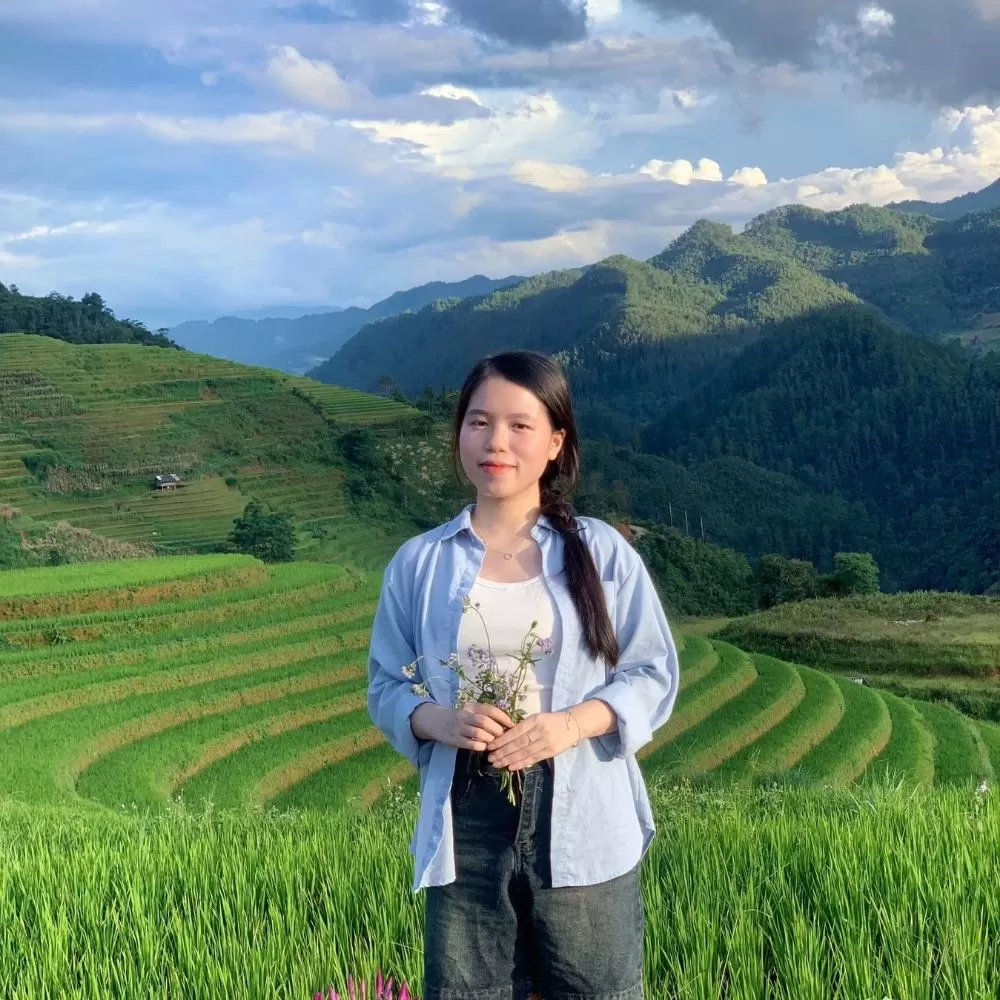
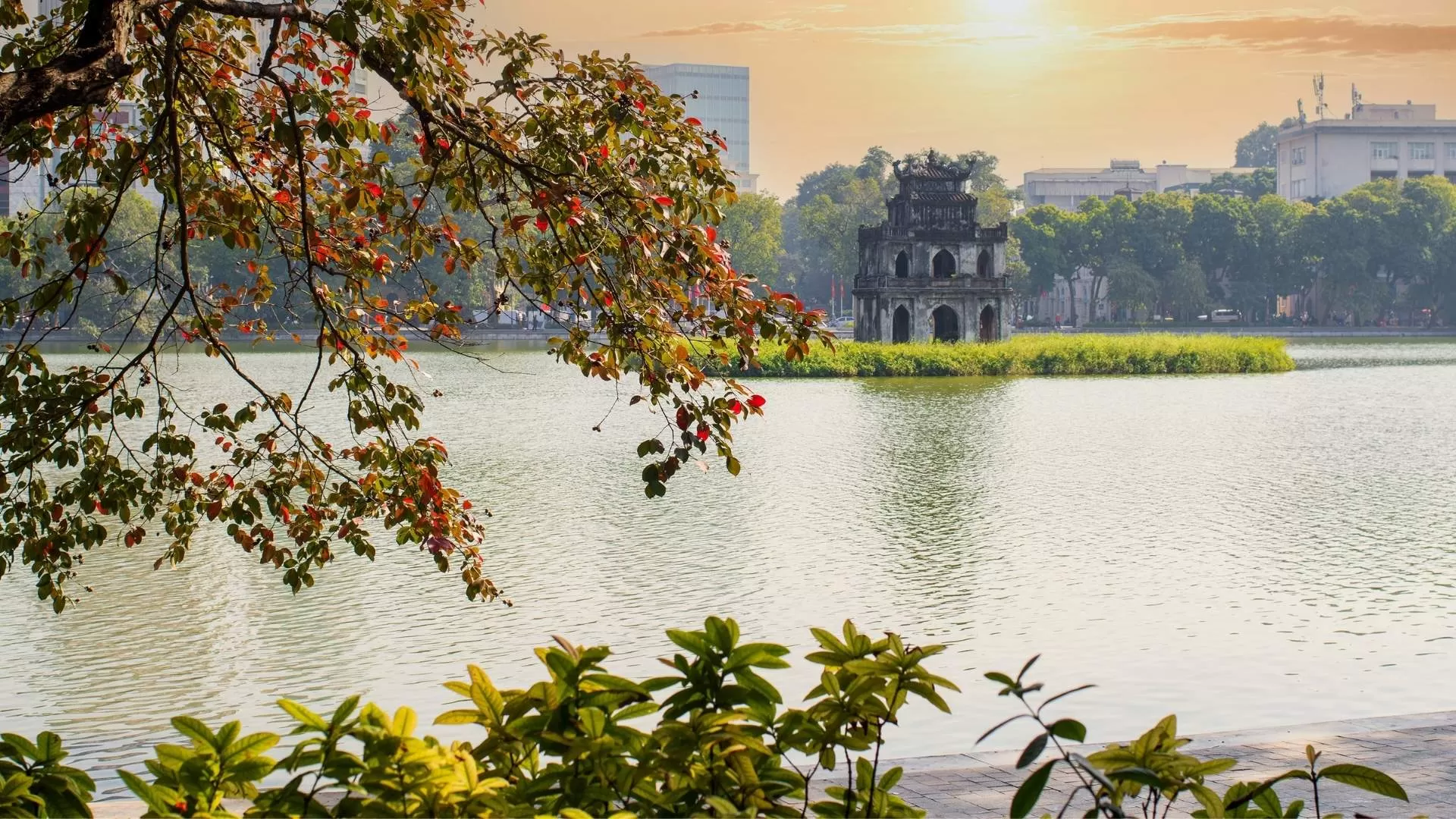
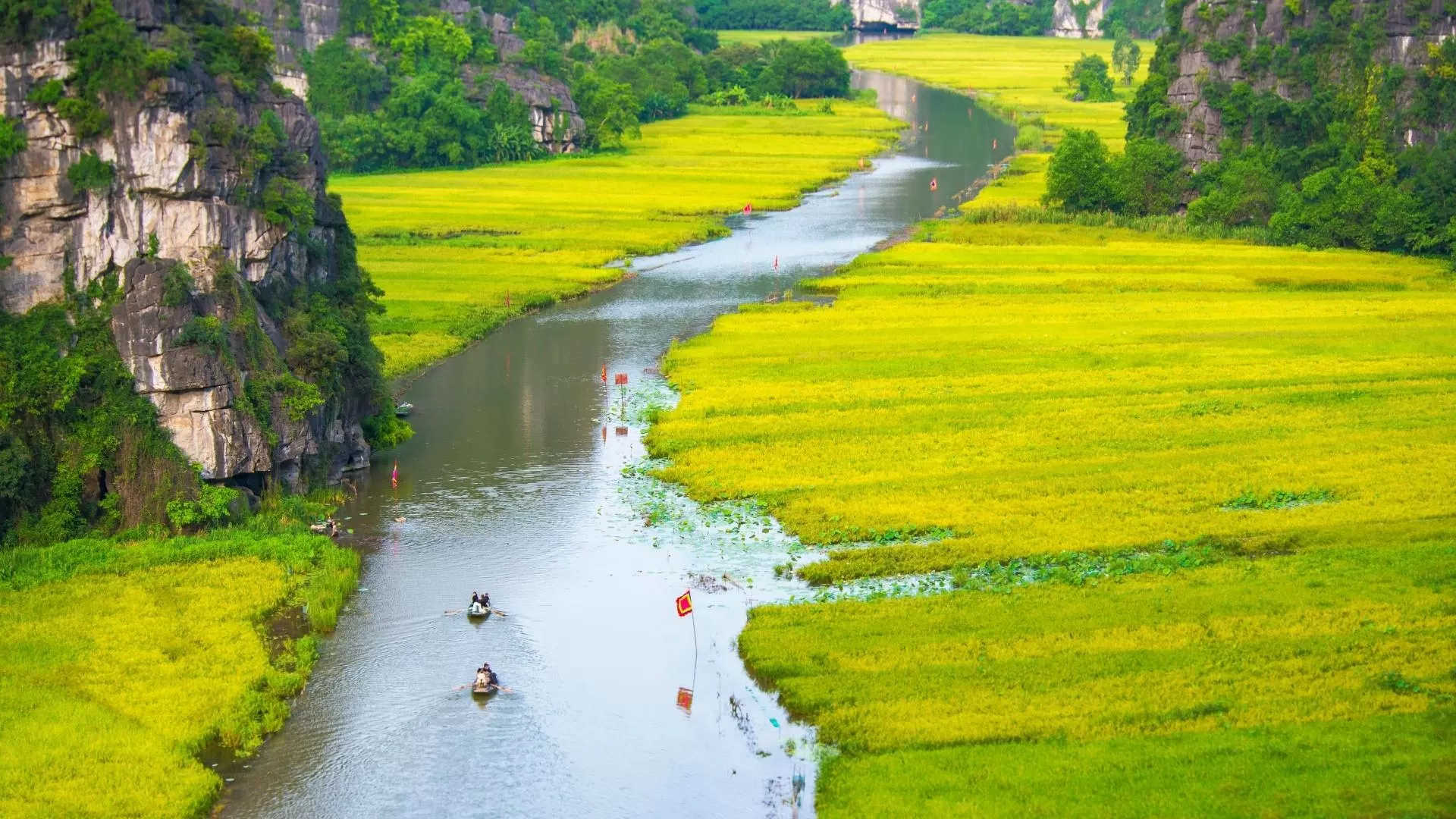
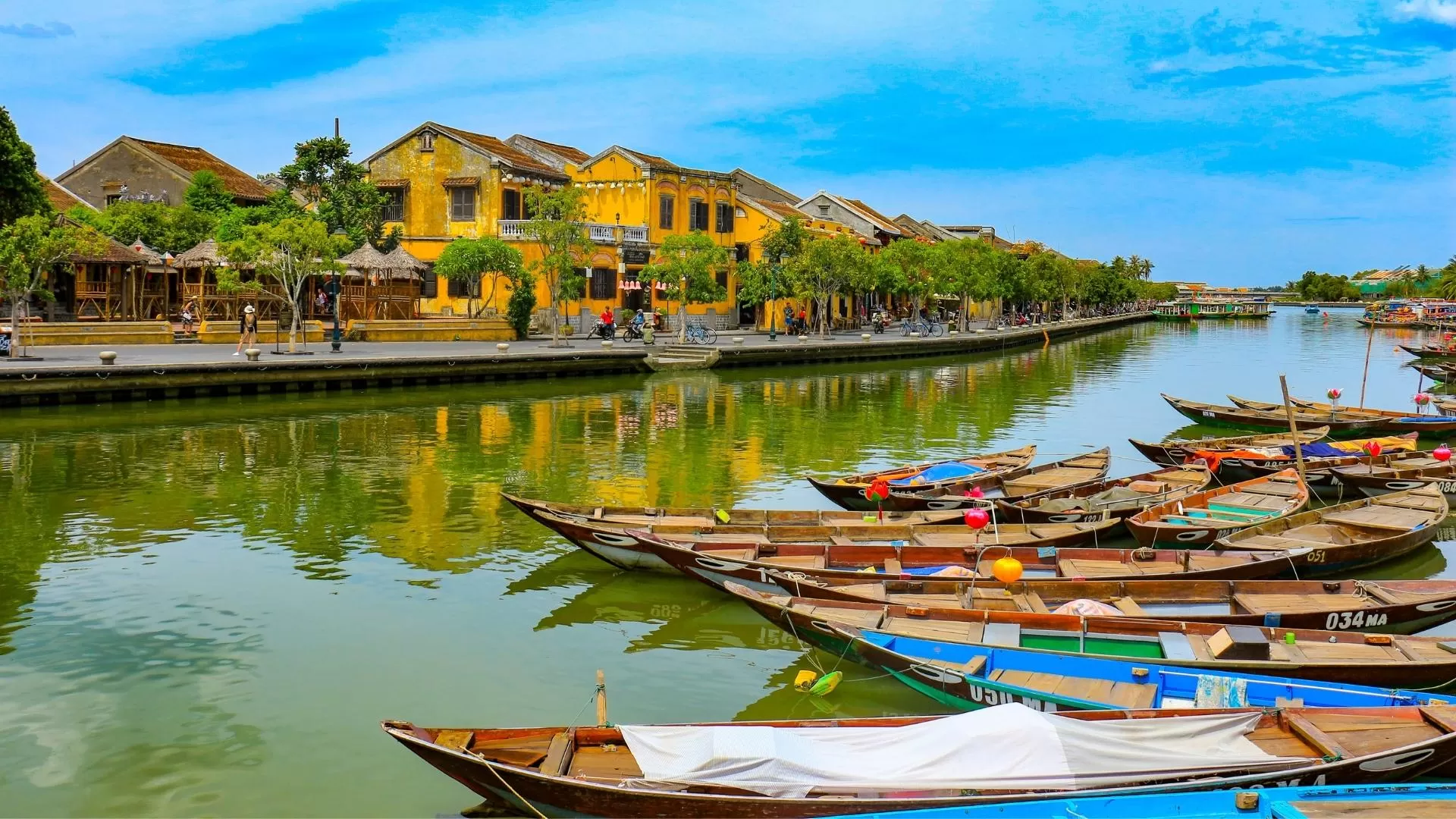





.webp)
